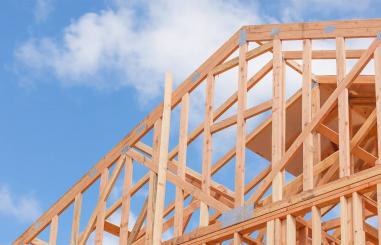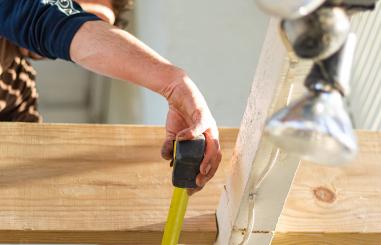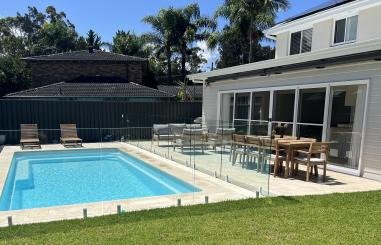Australia’s stunning landscapes may be challenging for construction. From coastal cliffs to steep slopes and flood-prone lowlands, any build in these areas may require careful planning, innovative design, and a deep understanding of the local environment. Here are some tips on how to survive these challenges:
Before any construction begins, a thorough assessment of the site is essential. This involves:
Topographical Surveys: A detailed topographical survey maps the contours and features of the land, providing critical information on elevation, slope gradient, and natural features like rock formations or water bodies. Understanding the topography is key to designing a structure that works with, rather than against, the landscape.
Soil Testing: Soil composition varies greatly across Australia, from sandy coastal soils to clay-rich inland areas. Soil testing helps determine the stability of the ground, its load-bearing capacity, and any potential issues like soil erosion or landslides. This information is crucial for designing appropriate foundations.
Environmental Impact Assessment: For sites in sensitive ecosystems or areas prone to natural hazards like bushfires or floods, an environmental impact assessment may be required. This ensures that the construction minimizes its impact on the local environment and adheres to regulatory requirements.
Once the site has been thoroughly assessed, the next step is to design a structure that adapts to the terrain’s unique challenges:
Split-Level and Tiered Designs: On sloping sites, split-level or tiered designs allow the building to follow the natural contours of the land. This minimizes the need for extensive excavation and reduces the environmental impact. These designs also create dynamic interior spaces with varying ceiling heights and levels, adding architectural interest.
Retaining Walls and Terracing: For steeper slopes, retaining walls and terracing help stabilize the site and create level areas for construction. These elements can be integrated into the landscape design, creating functional outdoor spaces like gardens, patios, or decks that blend seamlessly with the natural surroundings.
Elevated Structures: In flood-prone or coastal areas, elevating the structure on stilts or piers is a common solution. This not only protects the building from potential floodwaters but also enhances ventilation and takes advantage of views. Elevated designs are particularly popular in Queensland’s tropical regions, where they also help keep homes cool.
Foundations Adapted to Terrain: On rocky sites, traditional foundations may not be suitable. Instead, builders might use drilled piers or rock anchors that secure the building directly into the rock. These foundations provide stability and reduce the need for extensive earthworks.
The materials used in construction must be carefully selected to suit the environmental conditions of the site:
Durable Materials: In areas exposed to harsh weather conditions, such as high winds, salt air, or extreme temperatures, materials like concrete, steel, and stone are often preferred for their durability and low maintenance. For example, marine-grade stainless steel is commonly used in coastal homes to resist corrosion.
Timber: While timber is a popular choice for its aesthetic appeal and sustainability, it must be treated for durability in challenging environments. In bushfire-prone areas, fire-resistant timber is essential, while in humid tropical regions, treated timber resists rot and termites.
Composite Materials: Modern composite materials, which combine the strengths of different materials, offer enhanced performance in difficult terrains. For instance, fiber cement cladding can mimic the look of wood while offering greater resistance to moisture and pests.
Local Materials: Whenever possible, using locally sourced materials can reduce transportation costs and environmental impact while ensuring that the materials are well-suited to the local climate and conditions.
Building on difficult terrain often involves mitigating environmental risks such as erosion, landslides, and water management:
Erosion Control: On sloping sites, erosion control is crucial to prevent soil loss and protect the structure. This can be achieved through the use of retaining walls, vegetation, and geotextiles that stabilize the soil. Planting native vegetation is particularly effective, as it helps bind the soil and complements the natural landscape.
Drainage and Water Management: Effective drainage is essential to prevent water damage, especially on sloping sites or in flood-prone areas. Designing proper drainage systems, including French drains, swales, and retention basins, helps manage stormwater runoff and reduces the risk of flooding. In coastal or low-lying areas, raising the structure above potential flood levels is a key strategy.
Fire-Resistant Design: In bushfire-prone areas, special design considerations are required to protect the building from fire. This includes using fire-resistant materials, installing ember guards, and ensuring that the structure has defensible space around it. Building to the standards set by the Australian Bushfire Building Code is essential.
Several Australian projects showcase how innovative design and careful planning can overcome the challenges of building on difficult terrain:
The Pole House, Fairhaven, Victoria: This iconic house, perched on a single concrete pole, is a perfect example of adapting to a challenging coastal site. The elevated design not only provides stunning ocean views but also protects the structure from erosion and coastal weather.
The Treehouse, Blue Mountains, New South Wales: Built on a steep, forested site, this home integrates seamlessly with its environment. The design uses natural materials like timber and stone, and the structure is elevated to minimize its footprint and preserve the surrounding trees.
Cliff House, Kangaroo Island, South Australia: This dramatic residence is built into the rocky cliffs of Kangaroo Island. The foundation is anchored directly into the rock, providing stability while allowing the home to blend with the rugged landscape.
Building on difficult terrain in Australia presents unique challenges, but with the right approach, these challenges can be turned into opportunities. As Australia’s population grows and more people seek to build in diverse and remote locations, the ability to adapt to challenging terrains will become increasingly important, pushing the boundaries of what’s possible in construction and design. Here at Prescom Constructions we do not back down with challenging builds. We have the right tools and expertise for the job.
If you’d like to learn more, give us a call at 0415 287 701 or submit an inquiry at our website at www.prescomconstructions.com.au.

Prime Costs (PC) and Provisional Sums (PS) are essential terms in construction quotes. Prime Costs cover allowances for materials like fixtures or appliances that haven't been selected yet, offering flexibility but potentially leading to additional costs if more expensive options are chosen. Provisional Sums are estimates for work not fully defined when quoting, like excavation or retaining walls, and may change due to unforeseen circumstances. Understanding the distinction helps homeowners manage budgets and avoid surprises during the building process.
Read more
A pre-handover inspection is crucial when taking possession of a new home to ensure any issues or defects are addressed before the final settlement. Key areas to check include the structural integrity (e.g., walls, floors), fittings and fixtures (e.g., taps, doors, windows), kitchen appliances, bathroom tiles and plumbing, electrical systems, and finishes like paintwork and flooring. By thoroughly inspecting these aspects, homeowners can prevent costly repairs later and ensure a smooth transition into their new home.
Read more
In recent years, a new trend has emerged in the world of residential homes known as the Australian Hamptons style. This unique architectural and interior design style combines elements of traditional Hamptons style with a distinctive Australian twist, resulting in homes that are both elegant and relaxed. Often referred to as Aussie Hamptons, these homes have gained popularity for their timeless appeal and seamless integration with the beachy Australian lifestyle.
Read more